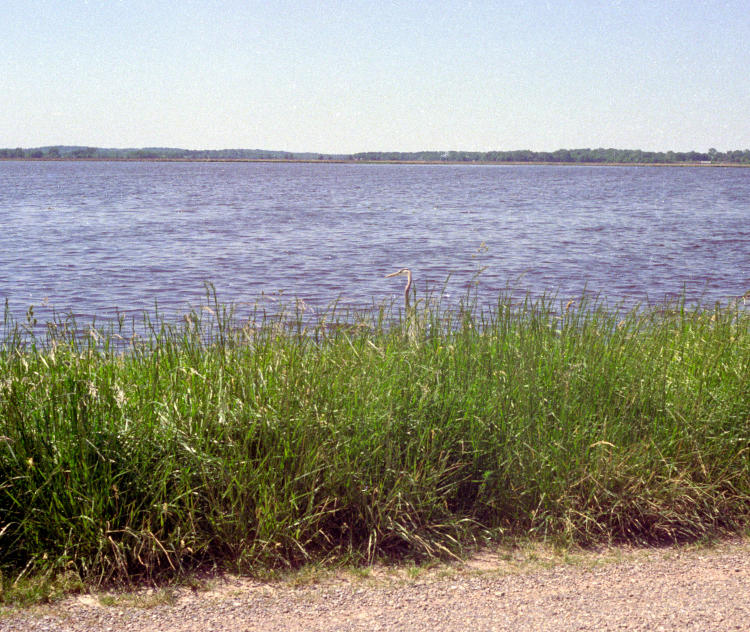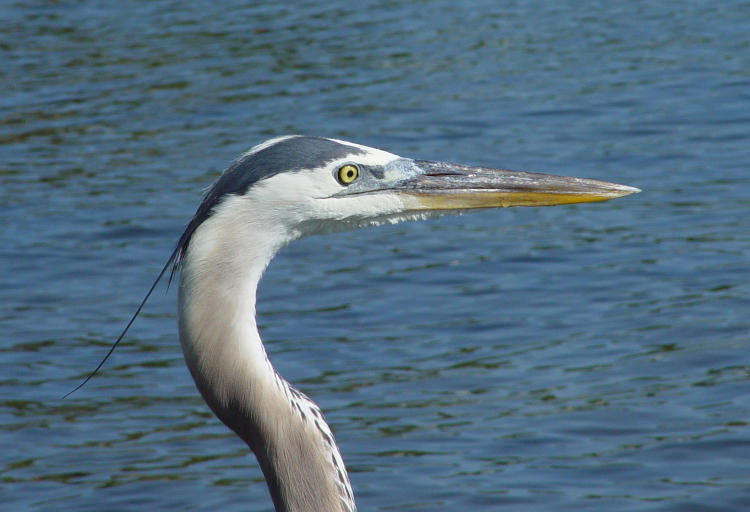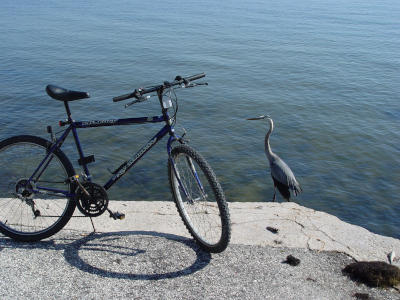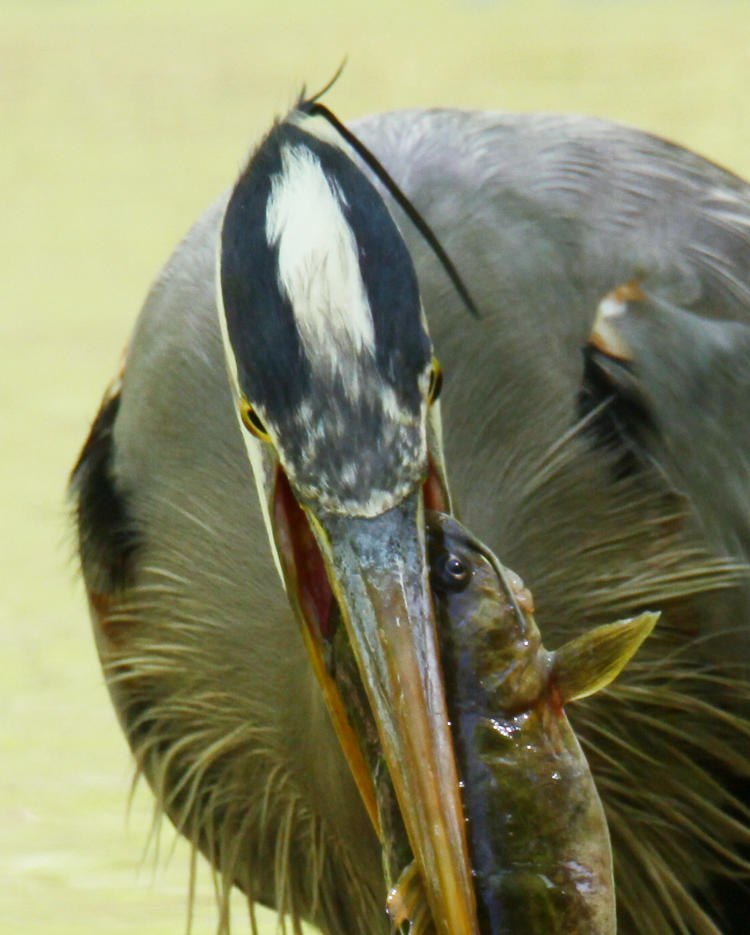
We hie back to 1990 for this one, one of the few rolls of negatives that I have from when I lived in central New York – a few months after this photo, I would pack my meager belongings into a small rental van and move to North Carolina. But before that, I took a drive through Montezuma National Wildlife Refuge, armed with my trusty (not really) little Wittnauer Challenger, my first 35mm camera. It was a rangefinder with a fixed 50mm lens, so while it counts as 35mm, it wasn’t an SLR with interchangeable lenses, more of a tourist camera. But it’s what I had.
With the possible exception of a really distant frame, this is the first photo I have of a great blue heron (Ardea herodias) – more the shortcomings of the camera than anything else, since the refuge was and is a great place to see wildlife up close, though it should be noted that I wasn’t making much effort at that time either. I was glad to see one so close to the drive, able to be photographed out the window of my car, but all this provided was enough proof to identify the species correctly.
We’ll do an interim stop now, in 2004.

 Herons can be found all over the US, but Florida is the only place I’ve found them so habituated to people that they allow ridiculously close approaches. Both images here were taken with the borrowed Sony F717, with a maximum focal length equivalent of 190mm – which doesn’t mean a lot anymore, but about 4x the Wittnauer’s lens. That would have been nowhere near enough to make this much difference, so the primary improvement came from the bird itself, and I included a wider-angle shot showing my bike – the heron really was close. A lot of fisherfolk in Florida use live bait, which herons have learned they can steal, so they’re often in close proximity if the pickings look good. On another day, in the same location, I snagged this shot.
Herons can be found all over the US, but Florida is the only place I’ve found them so habituated to people that they allow ridiculously close approaches. Both images here were taken with the borrowed Sony F717, with a maximum focal length equivalent of 190mm – which doesn’t mean a lot anymore, but about 4x the Wittnauer’s lens. That would have been nowhere near enough to make this much difference, so the primary improvement came from the bird itself, and I included a wider-angle shot showing my bike – the heron really was close. A lot of fisherfolk in Florida use live bait, which herons have learned they can steal, so they’re often in close proximity if the pickings look good. On another day, in the same location, I snagged this shot.
So where do we find ourselves now?

Well, I can’t vouch for you, but I’m back in North Carolina, where the herons aren’t so blasé about close approaches. This time (2019) I was using the Tamron 150-600 at 600mm, but the 7D has a ‘digital multiplier’ of 1.6 over a 35mm frame, so roughly 960mm, or 19x the Wittnauer’s lens, and this is even cropped closer – had I used this lens in the same circumstances as the first image above, you can bet it would have been a lot tighter, similar to the second image.
And most of the credit goes to the equipment here – but not all. On an outing with a student along Jordan Lake, we’d seen the heron fly off from another location and tracked it visually until it alighted in a tree, conveniently close to our path ahead. So we stalked it, taking our time, staying very quiet, and firing off frames as we approached. Eventually, this brought us close enough for decent portraits, even horrified-looking ones, and I’m comfortable saying that most people would have scared the heron off long before this proximity, just from approaching in a typical human fashion. Even if they hadn’t, it still may have gone unnoticed because it was remaining still and quiet, and you can see that it was blending into the trunk and foliage – easy to miss, unless you’re looking closely. And of course, up, which many people never do.
Another, because.

Same lens, and cropped a bit tighter again too, but this time it’s Duke Forest in NC, last year. Two more things to credit: spotting it before getting too close, and the impending meal held in the heron’s beak – there’s a whole sequence here, in case you missed it. Herons with food, or even the imminent potential of such, tend to change their standards of what constitutes a ‘hazard,’ ignoring all but very close approaches. It still required remaining quiet and as motionless as possible, plus a lot of patience as the heron juggled the meal for a ridiculously long time, but a fish this size has to be lined up precisely to get down that gullet whole.
All that said, great blue herons are much more tolerant of approaches than green herons, and way more than kingfishers, so if you’re going to get close to something, it’s more likely a heron – I have hundreds of photos of the species, and I couldn’t even tell you how many I’ve posted here, but at least a few a year. So great accomplishments? Not especially. But it’s still nice to compare them to the start.
Meanwhile, this is probably the best photo of a channel catfish that I’ve gotten. So far.



















































